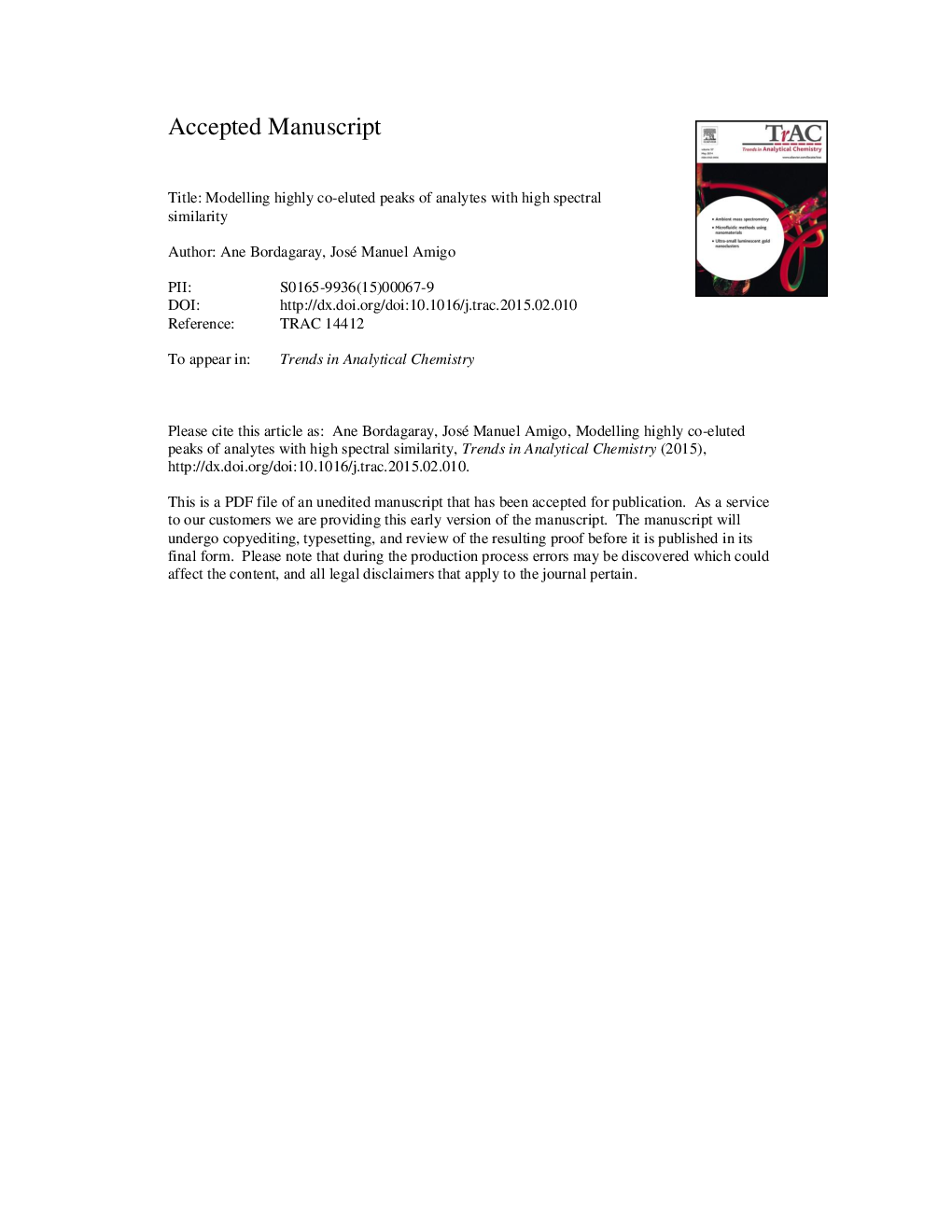| Article ID | Journal | Published Year | Pages | File Type |
|---|---|---|---|---|
| 7689500 | TrAC Trends in Analytical Chemistry | 2015 | 14 Pages |
Abstract
Modelling co-eluted peaks has always been a keystone in chemometric applications to chromatographic data. Multivariate Curve Resolution (MCR) and Parallel Factor Analysis 2 (PARAFAC2) have been widely used to solve the co-elution problem (among others), profiting from the uniqueness of the spectrum for each co-eluted analyte. Nevertheless, there are cases where these curve-resolution approaches may fail, when the same analyte gives two co-eluted peaks or when two analytes have highly correlated spectra. In this article, we put forward the usefulness of Parallel Factor Analysis with Linear Dependence (PARALIND) that is able to handle overlapping peaks when the spectral profiles of the analytes are highly correlated. To illustrate the problem, we study two different situations: first, the co-elution of two peaks, belonging to L-proline; and, second, an overlapped mixture of fungicides with high similarity in their spectra.
Keywords
Related Topics
Physical Sciences and Engineering
Chemistry
Analytical Chemistry
Authors
Ane Bordagaray, José Manuel Amigo,
